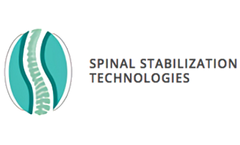Spinal Stabilization Articles & Analysis: Older
9 articles found
CASE PRESENTATION A 68-year-old female with some dysmorphism and mild osteoporosis had a fall in the shower, resulting in a Y-shaped sacral fracture and non-displaced fractures of the superior and inferior pubic ...
Nucleus replacement technologies are a minimally invasive alternative to spinal fusion and total disc replacement that have the potential to reduce pain and restore motion for patients with degenerative disc disease. Finite element modeling can be used to determine the biomechanics associated with nucleus replacement technologies. The current study focuses on a new nucleus replacement device ...
A new intervertebral disc nucleus replacement device having three major features has been designed, comprising: 1) a peripheral textile band, 2) a silicone membrane filled with silicone that cures in situ forming an elastomeric implant and 3) an internal chamber that allows for deformation of the cured component (Figure 1). Samples of this device were subjected to biomechanical flexibility ...
A new intervertebral disc nucleus replacement device having three major features has been designed, comprising: 1) a peripheral textile band, 2) a silicone membrane filled with silicone that cures in situ forming an elastomeric implant and 3) an internal chamber that allows for deformation of the cured component (Figure 1). Samples of this device were subjected to biomechanical flexibility ...
Abstract Background Nucleus replacement devices are designed to replace the native pain-generating lumbar nucleus while preserving the annulus fibrosus, endplates, and natural motion. The DASCOR Disc Arthroplasty Device seemed to perform well clinically but was discontinued in 2009. While there are no commercially available NRDs today, the potential advantages of using such devices have ...
To confidently perform a spinal fusion and screw fixation with excellence surgical navigation is consistently used as a powerful tool. Surgical Navigation provides real-time guidance and precise measurements for accurately placing the pedicle screws to help stabilize the spine. A preoperative CT scan gives a detailed visualization of the structure decreasing the ...
Summary Due to their anatomical positioning, contraction of the deep abdominal muscles is often difficult to feel and therefore for patients to master. However, they are actively involved in spinal (or lumbar spine) stabilisation, and also in several biological processes [1]. They therefore constitute an important target in several physiotherapeutic treatments [1]. Questions are often raised ...
A novel intervertebral disc nucleus replacement device is comprised of an elas-c silicone membrane filled with liquid in situ curable silicone to form an elastomeric implant surrounding a central gas chamber that allows inward deforma-on of the cured component under load. Samples of this device were subjected to finite element analysis (FEA), digital pressure mapping and biomechanical flexibility ...
The early fixation of pedicle screws is crucial for improving spinal stabilisation. Firm and immediate fixation between pedicle screws and bone prevents aseptic loosening and implant failure. Coating with hydroxyapatite is a possible method to improve the fixation of metallic implants in bone. In this study, scanning transmission electron microscopy (STEM) has been used to investigate the ...





